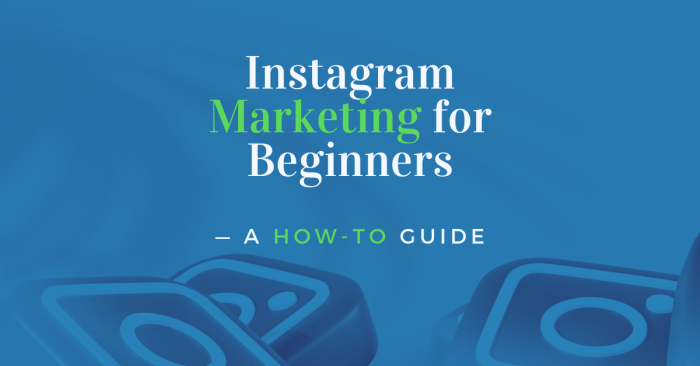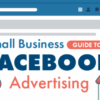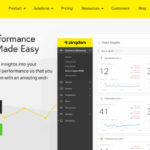5 tips to launching your first paid Instagram marketing campaign will guide you through the essentials of crafting a successful paid campaign on Instagram. From defining your goals and target audience to optimizing your campaigns for maximum impact, this comprehensive guide covers all the key aspects of getting started. We’ll explore different ad formats, crafting compelling copy and visuals, and setting a realistic budget to track results effectively.
This in-depth approach will equip you with the knowledge and strategies to create a winning campaign that resonates with your ideal customers, drives engagement, and ultimately generates conversions on Instagram.
Defining Your Goals and Target Audience
Before diving into paid Instagram marketing, a crucial first step is defining your campaign goals and understanding your target audience. A well-defined strategy ensures your budget is allocated effectively and your efforts yield the desired results. This is where the foundation of a successful campaign is laid.
The Importance of Clear Objectives
Clearly defined objectives are essential for a successful paid Instagram campaign. They provide a roadmap for your marketing efforts, guiding every decision from ad copy to targeting strategies. Without specific goals, it’s difficult to measure the effectiveness of your campaign and adjust your approach accordingly. Examples of clear objectives include increasing brand awareness, driving website traffic, generating leads, or boosting sales.
Identifying Your Ideal Customer Profile (ICP)
Knowing your ideal customer profile (ICP) is critical to crafting effective Instagram marketing campaigns. This involves pinpointing the demographics, interests, and behaviors of your most valuable customers. Analyzing existing customer data and market research can provide valuable insights.
Demographics encompass factors like age, gender, location, occupation, and income. Interests include hobbies, passions, and lifestyle choices. Behaviors refer to online and offline actions, such as purchasing habits, social media engagement, and preferred communication channels.
Segmenting Your Target Audience
Segmenting your target audience allows you to tailor your marketing messages to specific groups. This personalized approach resonates more deeply with your audience, leading to higher engagement and conversion rates. Consider segmenting by interests, purchase history, or engagement levels. For example, if you sell athletic apparel, you might segment your audience into runners, weightlifters, and yoga enthusiasts.
Comparing Instagram Audience Targeting Options
| Targeting Option | Description | Effectiveness |
|---|---|---|
| Location | Targeting users based on their geographic location. | Effective for businesses with a specific service area or those targeting a particular region. |
| Demographics | Targeting users based on age, gender, and other demographic factors. | Useful for reaching specific segments of the population. |
| Interests | Targeting users based on their interests and hobbies. | Can be highly effective in reaching engaged audiences. |
| Behaviors | Targeting users based on their online behavior, such as purchase history and website visits. | Highly targeted, leading to higher conversion rates. |
| Custom Audiences | Targeting users who have interacted with your business before. | Extremely effective for retargeting and re-engaging existing customers. |
Understanding Pain Points and Desires
Beyond demographics and interests, understanding your audience’s pain points and desires is paramount. What problems are they trying to solve? What are their aspirations? Addressing these needs in your marketing messages will resonate more deeply and encourage conversions.
Questions to Define Your Target Audience
- What are the key demographics of my ideal customer? (Age, location, occupation, income, etc.)
- What are their primary interests and hobbies? (e.g., sports, cooking, fashion)
- What are their online behaviors? (e.g., frequent Instagram users, engaged in online communities, active on specific platforms)
- What are their typical purchase patterns? (e.g., price sensitivity, preferred payment methods, buying frequency)
- What are their biggest challenges or pain points related to my product or service?
- What are their aspirations and goals that my product or service can help them achieve?
Choosing the Right Instagram Advertising Format: 5 Tips To Launching Your First Paid Instagram Marketing Campaign
Instagram advertising offers a diverse range of formats, allowing you to tailor your campaigns to specific objectives and target audiences. Understanding the strengths and weaknesses of each format is crucial for maximizing your return on investment. From captivating visuals to engaging storytelling, choosing the right format can significantly impact your campaign’s success.Instagram ad formats cater to different needs, from showcasing a single product to telling a complete story.
This section will delve into the various formats, exploring their strengths and weaknesses, and helping you determine which ones are best suited for your goals. Ultimately, selecting the optimal format will be key to achieving your desired results on Instagram.
Image Ads
Image ads are a fundamental Instagram ad format. They use compelling visuals to capture attention and communicate key messages. Their simplicity allows for clear and concise messaging, making them effective for showcasing products, services, or driving immediate action. A well-designed image ad can be a powerful tool in reaching a wider audience, conveying your brand message effectively.
So, you’re ready to launch your first paid Instagram marketing campaign? Five key tips can make all the difference. Understanding how companies like Netflix use data, like in their how netflix uses analytics approach, is crucial. Knowing their audience’s preferences through analytics is paramount. This translates directly to choosing the right targeting options and crafting engaging ad copy, ultimately boosting your campaign’s success.
Keep those five tips in mind for a strong launch!
Video Ads
Video ads offer a more dynamic and engaging experience compared to image ads. They can effectively tell stories, showcase products in action, and build brand awareness. The visual and auditory elements create a more immersive experience for viewers. However, the need for a captivating video can be a challenge.
Carousel Ads
Carousel ads allow you to present multiple images or videos in a single ad. This format is excellent for showcasing multiple products, highlighting different features of a product, or presenting a detailed narrative. Carousel ads encourage exploration and provide more space for conveying information. They are particularly beneficial when aiming to highlight several product benefits or different facets of a service.
So, you’re ready to dive into paid Instagram marketing? Knowing how to create value in B2B markets is key, create value in b2b markets and understanding your target audience is crucial. My 5 tips for launching your first paid campaign will help you craft compelling ad copy and target the right audience for maximum impact. Focus on high-quality visuals and engaging content, and track your results for continuous improvement – that’s the name of the game!
Stories Ads
Stories ads seamlessly integrate with Instagram Stories, capitalizing on the platform’s ephemeral nature. They offer a more conversational and interactive approach to advertising. The ephemeral nature of Stories adds a sense of urgency and can drive immediate engagement, making them ideal for time-sensitive promotions or limited-time offers.
Table: Optimal Dimensions and Specifications
| Ad Format | Optimal Dimensions (Pixels) | Aspect Ratio | File Types |
|---|---|---|---|
| Image Ads | 1080 x 1080 | 1:1 | JPEG, PNG |
| Video Ads | 1080 x 1920 | 9:16 | MP4, MOV |
| Carousel Ads | 1080 x 1920 | 9:16 | JPEG, PNG, MP4, MOV |
| Stories Ads | 1080 x 1920 | 9:16 | MP4, MOV |
Creating Compelling Visuals and Copy
Visual appeal and compelling copy are essential for any successful ad format. A high-quality image or video, paired with concise and persuasive copy, will greatly enhance the ad’s effectiveness. For example, showcasing a product in a visually appealing setting can greatly enhance engagement. Clear and concise messaging is key, using language that resonates with the target audience.
Instagram Ad Formats to Avoid
- Ads that are too generic or lack visual appeal. Generic ads often fail to capture attention and do not effectively communicate the brand’s unique message.
- Ads with poor-quality visuals. Blurry images, low resolution videos, and other visual imperfections can negatively impact the viewer’s experience and diminish the ad’s effectiveness.
- Ads that don’t align with the Instagram aesthetic. Images and videos that don’t fit the overall style and feel of Instagram will likely not resonate with the target audience.
- Ads with irrelevant or confusing copy. Copy that doesn’t clearly communicate the ad’s message or offer a clear call to action will likely be ineffective.
Crafting Compelling Ad Copy and Visuals

Instagram ads are more than just a collection of words and images; they’re mini-narratives designed to capture attention and drive action. Effective ad copy and visuals are crucial for grabbing your target audience’s attention in the crowded Instagram feed and compelling them to engage with your brand. Crafting compelling content requires a strategic approach that considers your brand identity, target audience, and desired outcome.Beyond simply stating facts about your product, compelling ads tell a story, evoke emotions, and create a desire in the viewer.
They showcase the value your product or service brings to the user’s life, rather than just listing features. Understanding the psychology of persuasion, and crafting visuals that complement your messaging, is key to driving conversions.
Crafting Compelling Ad Copy
Strong ad copy is concise, clear, and focused on delivering value. Avoid jargon and overly technical language; instead, use simple, everyday language that resonates with your target audience. A clear call to action is essential. Tell people exactly what you want them to do – visit your website, download an app, or make a purchase. Clearly state the value proposition, highlighting the benefits your product or service offers.
- Concise Messaging: Keep your copy brief and to the point. Use strong verbs and active voice to create a sense of urgency and impact. Focus on the key benefits of your product or service rather than getting bogged down in unnecessary details.
- Clear Calls to Action: Guide users with clear and compelling calls to action. Use strong action verbs like “Shop Now,” “Learn More,” “Sign Up,” or “Download.” Ensure the call to action is visually distinct from the rest of the copy.
- Strong Value Propositions: Highlight the unique value proposition of your offer. What problem does your product or service solve? How does it improve the lives of your target audience? Emphasize the tangible benefits, not just the features.
Examples of Effective Instagram Ad Copy
Here are a few examples showcasing different approaches:
- Example 1 (Direct & Concise): “Upgrade your workout routine with our new fitness tracker! Track your progress, set goals, and stay motivated. Shop now: [link].”
- Example 2 (Storytelling): “Tired of endless scrolling? We get it. Our curated feed lets you discover your passions. Sign up for free: [link].”
- Example 3 (Emotional Appeal): “Give the gift of connection. Our personalized journals help you connect with your inner self and nurture meaningful relationships. Shop now: [link].”
Using Storytelling and Emotional Appeals
Weaving a narrative into your ad copy can make it more memorable and impactful. Connecting with your audience on an emotional level can foster trust and create a lasting impression. Examples include showcasing the personal stories of satisfied customers or highlighting the positive impact your product has on their lives.
Designing Eye-Catching Visuals
Visuals play a crucial role in grabbing attention and conveying your brand identity. Ensure your visuals are high-quality, aesthetically pleasing, and align with your brand’s aesthetic. Use consistent color palettes, typography, and imagery to create a cohesive brand experience.
- Brand Identity Alignment: Your visuals should consistently reflect your brand identity, from the color palette to the style of imagery. This consistency builds brand recognition and trust.
- Target Audience Resonance: Consider your target audience’s preferences when designing your visuals. What kind of imagery and colors appeal to them? What kind of mood or feeling do you want to evoke?
- High-Quality Images and Videos: Invest in high-quality images and videos that are clear, sharp, and well-lit. Blurry or poorly lit images can detract from your message and damage your brand’s credibility.
Importance of High-Quality Images and Videos
High-quality images and videos in Instagram ads are essential for conveying your message effectively. They enhance the overall aesthetic of your campaign and make your ads stand out from the crowd. Clear and engaging visuals can significantly improve engagement and drive conversions.
Ad Copy Styles and Potential Impact
| Ad Copy Style | Potential Impact ||—|—|| Direct and Concise | Drives immediate action, suitable for promotions and sales || Storytelling | Builds brand connection, fosters trust, effective for showcasing product value || Emotional Appeal | Creates strong emotional response, encourages engagement and loyalty || Informative | Educates the audience, builds credibility, best for complex products or services |
Setting a Realistic Budget and Tracking Your Results
Launching a paid Instagram marketing campaign requires careful planning, especially when it comes to budgeting and tracking your results. A well-defined budget, coupled with effective tracking mechanisms, ensures that your campaign is not only efficient but also profitable. Understanding how to allocate your budget and monitor key metrics will significantly impact the success of your campaign.A realistic budget is crucial for a successful Instagram campaign.
It prevents overspending and ensures that your marketing efforts align with your overall business goals. A well-defined budget enables you to allocate resources effectively across different aspects of the campaign, optimizing your return on investment. Without proper budgeting, your campaign might run out of funds before achieving its objectives.
Importance of Setting a Realistic Budget
A realistic budget allows you to allocate resources across various ad formats and target audiences. It ensures that your campaign aligns with your overall business goals, preventing overspending and ensuring profitability. This crucial step prevents your campaign from depleting its budget before reaching its objectives.
Strategies for Budget Allocation
A strategic approach to allocating your budget is essential. Analyze the potential return on investment (ROI) for each ad format and target audience. For example, if a specific demographic demonstrates a higher conversion rate, allocating a larger portion of your budget to that audience can yield better results. Similarly, experimenting with different ad formats and adjusting your strategy based on performance data can optimize your ROI.
Estimating Potential Return on Investment (ROI)
Estimating potential ROI involves understanding your target audience’s demographics, interests, and buying behaviors. Consider factors like click-through rates, conversion rates, and cost per acquisition (CPA). For instance, if you’re targeting a high-value demographic with a high conversion rate, a higher budget allocation might be justified. Analyzing previous campaigns and industry benchmarks can provide valuable insights for estimating potential ROI.
A rough estimate can be calculated using a formula: (Total Revenue – Total Cost) / Total Cost.
Tracking Key Metrics
Tracking key metrics like impressions, clicks, conversions, and cost per acquisition (CPA) is vital for campaign optimization. These metrics provide valuable insights into campaign performance, enabling you to make data-driven adjustments. For example, if the cost per acquisition is higher than expected, you might need to refine your targeting or ad copy. Regularly monitoring these metrics allows for proactive adjustments to maximize your campaign’s effectiveness.
So, you’re ready to dive into paid Instagram marketing? Knowing the 5 crucial tips for launching your first campaign is key. But, before you dive headfirst, consider what kind of backlinks your business needs right now. Understanding what type of backlinks does your business really need right now will give you a huge boost in visibility, which in turn, can make your paid campaigns more effective.
Once you’ve got that nailed, you’ll be well on your way to optimizing your Instagram marketing efforts.
Utilizing Instagram Analytics Tools
Instagram offers built-in analytics tools to monitor campaign performance. These tools provide detailed insights into impressions, reach, engagement, and conversion data. By analyzing these reports, you can identify areas for improvement and optimize your campaign strategy. Utilize the platform’s analytics dashboard to track progress and adjust your campaign in real-time.
Essential Instagram Ad Metrics to Track
| Metric | Description | Importance |
|---|---|---|
| Impressions | Number of times your ad was shown | Indicates ad visibility and reach |
| Clicks | Number of clicks on your ad | Measures user engagement and interest |
| Conversions | Number of desired actions (e.g., purchases, sign-ups) | Directly measures campaign effectiveness |
| Cost per Acquisition (CPA) | Cost of acquiring a single customer | Essential for evaluating campaign profitability |
| Engagement Rate | Number of interactions with your ad (likes, comments, shares) | Measures user interest and ad effectiveness |
| Reach | Unique users who saw your ad | Indicates how many potential customers saw your ad |
Optimizing Your Campaigns for Maximum Impact
Launching a successful Instagram marketing campaign requires more than just setting up ads. Continuous monitoring, adaptation, and optimization are crucial for maximizing ROI. This involves understanding performance data, testing different approaches, and strategically re-engaging users. By consistently refining your strategies, you can ensure your campaign delivers the best possible results.Effective campaign optimization is a dynamic process. It’s not a one-time action, but rather an ongoing cycle of analysis, adjustment, and refinement.
Success comes from consistently monitoring performance metrics, identifying areas for improvement, and iterating on your strategies based on the data.
Monitoring and Adjusting Your Ads
Understanding your campaign’s performance is paramount to optimization. Regularly review key metrics like impressions, clicks, conversions, and cost-per-acquisition. Identify trends and patterns in the data to pinpoint areas of strength and weakness. For instance, if click-through rates are low on specific ad creatives, it indicates a need for adjustments. This iterative process of monitoring and adjusting ensures your campaigns remain aligned with your goals and are consistently performing at their best.
A/B Testing for Higher Conversions
A/B testing is a powerful technique for optimizing ad performance. Create variations of your ads, such as different images, captions, and calls-to-action. Run these variations simultaneously and analyze which performs better based on your defined metrics. For example, test two different ad images to see which resonates more with your target audience, leading to higher engagement and conversions.
Retargeting Interacted Users
Retargeting users who have previously interacted with your ads is a highly effective strategy. This allows you to re-engage potential customers who may have shown interest but didn’t convert. Instagram’s retargeting tools allow you to show tailored ads to these users based on their previous interactions. This targeted approach increases the likelihood of converting these users into paying customers.
Refining Targeting Criteria
Campaign performance data provides insights into your targeting effectiveness. Analyze which demographics, interests, and behaviors are most responsive to your ads. If certain segments aren’t performing as expected, adjust your targeting criteria to focus on more promising groups. This data-driven approach allows you to optimize your campaigns for the most relevant audience, ensuring your ads reach the right people.
Optimizing Ad Delivery and Reach, 5 tips to launching your first paid instagram marketing campaign
Optimize ad delivery by analyzing the times and days your audience is most active on Instagram. Adjust your ad schedule to align with these peak periods to maximize visibility. Experiment with different ad formats to determine which resonate best with your audience. For example, using carousel ads or video ads might increase engagement compared to static image ads.
These adjustments ensure your ads are seen by the most receptive audience.
Instagram Ad Optimization Techniques
- Regularly review campaign performance metrics, including impressions, clicks, conversions, and cost-per-acquisition.
- Implement A/B testing to compare different ad variations and optimize for higher conversion rates.
- Utilize Instagram’s retargeting features to re-engage users who have previously interacted with your ads.
- Refine targeting criteria based on campaign performance to ensure ads reach the most relevant audience.
- Adjust ad delivery schedules to align with peak audience activity times and days.
- Experiment with different ad formats to determine which best resonate with your target audience.
- Analyze competitor ads to identify successful strategies and apply learnings to your campaigns.
Closure

Launching a successful paid Instagram marketing campaign requires careful planning and execution. By understanding your target audience, selecting the right ad formats, crafting compelling visuals and copy, setting a realistic budget, and continuously optimizing your campaigns, you’ll maximize your return on investment. Remember, consistent monitoring and adaptation are crucial for success. This comprehensive guide will help you navigate the process with confidence and achieve your marketing objectives on Instagram.






